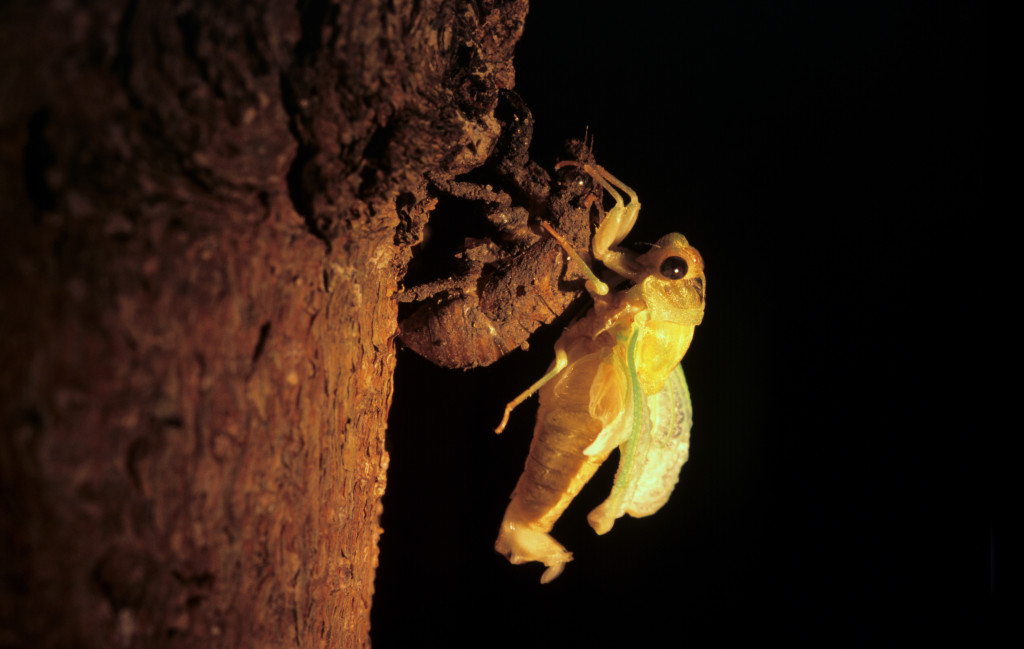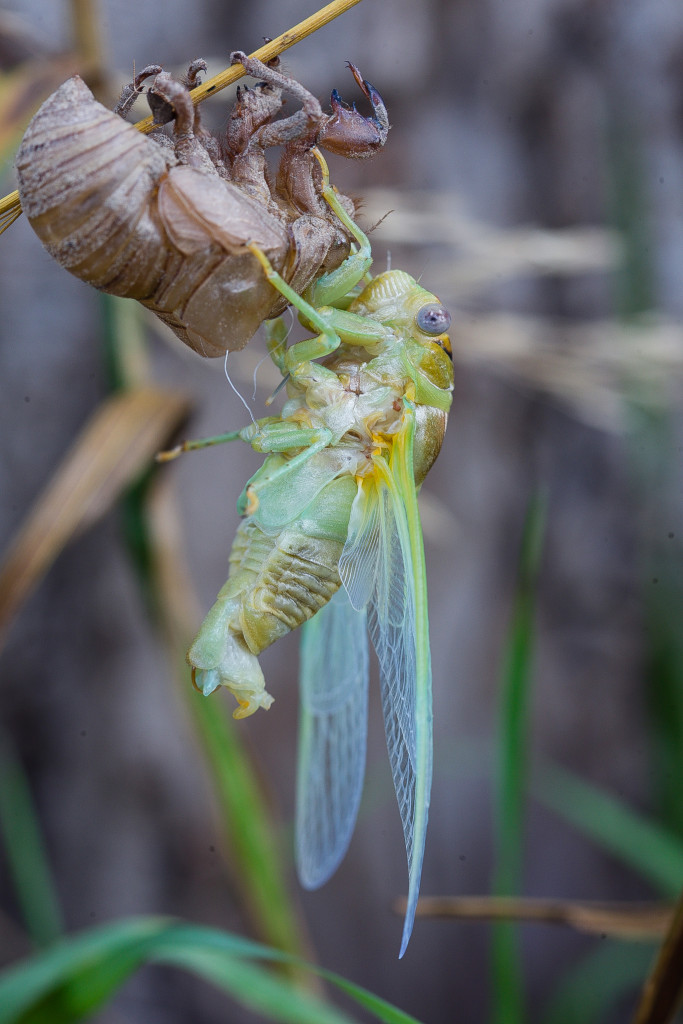Enlarge

By Jamie Bachmann, Outdoor Educator
While there may be plenty of hot days left this summer, I know that cool, fall days are on their way when I begin to hear the distinctive sounds of cicadas. Cicadas are one of the coolest and most noticeable group of insects active during this time of year.
Take a look at image above, which shows an exuviae, the remaining exoskeleton of an adult cicada that has just emerged, or eclosed. I’m sure you remember finding these as a kid and wearing them as jewels on your sweaters. No? Maybe it was just me. Anyhoo … what you’re more likely to remember is well-meaning adults who told you these insects were locusts. They are not. They are cicadas.

Locusts and cicadas are different insects. They are as dissimilar as ladybugs are to butterflies. Locusts are a kind of grasshopper in the order Orthoptera. Locusts are a grassland insect. Cicadas are true bugs, more closely related to stink bugs or boxelder bugs and are classified in the order Hemiptera. Cicadas live in and around trees.
Nebraska is home to 24 species of cicadas. There are two main groups. Most famous are the periodical cicadas, Magicicadas spp., which have 13- to 17-year life cycles. The second group is named the dog day or annual cicadas. These are the kind I most often find, and I’m sure you are most familiar with as well. Annual cicadas have two- to five-year-long life cycles, but the life cycles overlap, so a new batch of insects emerge every summer.

Male cicadas are the screamers. Their call is what most calls are purposed for: attracting a mate. From approximately mid-July through the end of August, males will sit high up in trees waiting and screaming. When a female fancies a particular male, she will fly up, land nearby and respond by making a clicking sound with her wings. After the male and female mate, the female will begin laying, or ovipositing, her eggs within three to five days in late summer.
Female cicadas have an interesting way of ovipositing her fertilized eggs. She will use her ovipositor to saw slits into small, living twigs, where she will deposit her 20 or so eggs inside nests. When the eggs hatch, they fall to the ground as nymphs and burrow 15 to 18 inches below the surface, where they will continue to live — not hibernate — burrowing and sucking the xylem from plant roots.



The larvae will grow through several instars, or growth stages. Cicadas go through incomplete metamorphosis, so they have no pupal stage. In their emergence year, fully grown larvae will move above ground, leaving behind ½-inch exit holes. They will then crawl up trees, house siding or picnic table legs to attach themselves for their final larval instar. During this instar, their exoskeleton will harden and eventually, the adult will emerge through a crack in the thorax, or area between the neck and abdomen. What is left behind are the shells we see clinging to tree trunks and other surfaces. Adults will live two to four weeks.

I wrote earlier the males are the screamers. Male cicadas make their classic end-of-summer-mating call using a tiny instrument called the tymbal organ. The tymbal is a thin membrane, only ¼ inch in diameter, attached to muscles near the abdomen that males will rapidly shake or vibrate, like a sheet flapping rapidly in the wind. Because a male cicada’s abdomen is partially hollow and curved, the sound is amplified and projected, similar to a tuba or trumpet. A group of singing males can produce volumes upwards of 100 decibels, and in the right conditions, can be heard over a mile away.
The post Cicada Sounds appeared first on Nebraskaland Magazine.
















